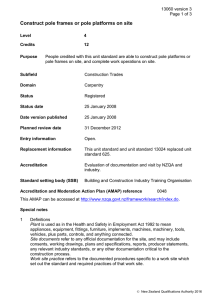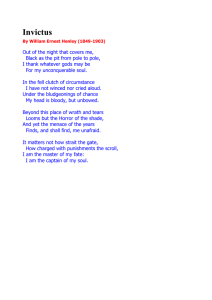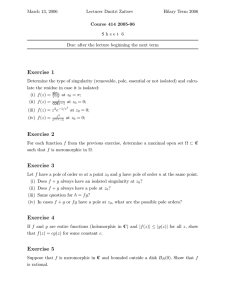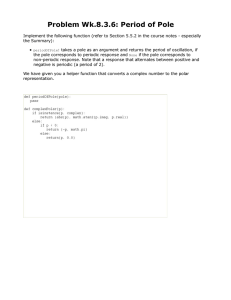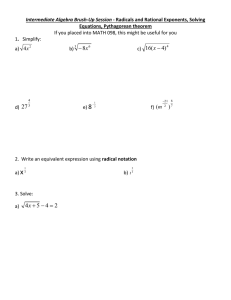NZQA registered unit standard 20413 version 3 Page 1 of 5
advertisement
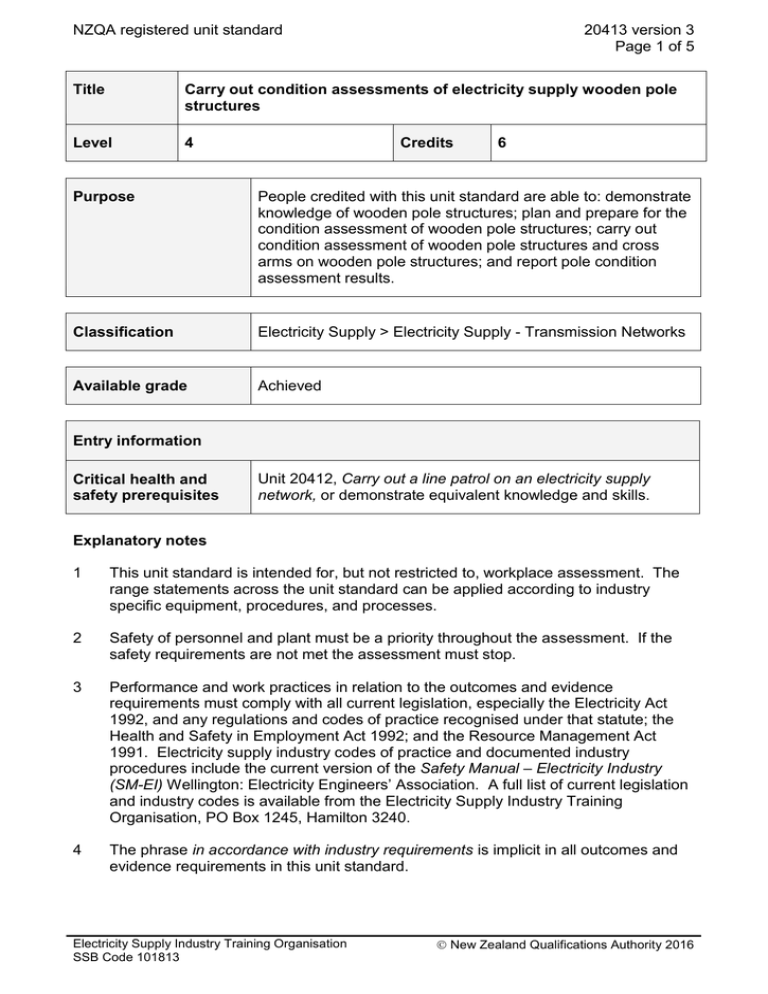
NZQA registered unit standard 20413 version 3 Page 1 of 5 Title Carry out condition assessments of electricity supply wooden pole structures Level 4 Credits 6 Purpose People credited with this unit standard are able to: demonstrate knowledge of wooden pole structures; plan and prepare for the condition assessment of wooden pole structures; carry out condition assessment of wooden pole structures and cross arms on wooden pole structures; and report pole condition assessment results. Classification Electricity Supply > Electricity Supply - Transmission Networks Available grade Achieved Entry information Critical health and safety prerequisites Unit 20412, Carry out a line patrol on an electricity supply network, or demonstrate equivalent knowledge and skills. Explanatory notes 1 This unit standard is intended for, but not restricted to, workplace assessment. The range statements across the unit standard can be applied according to industry specific equipment, procedures, and processes. 2 Safety of personnel and plant must be a priority throughout the assessment. If the safety requirements are not met the assessment must stop. 3 Performance and work practices in relation to the outcomes and evidence requirements must comply with all current legislation, especially the Electricity Act 1992, and any regulations and codes of practice recognised under that statute; the Health and Safety in Employment Act 1992; and the Resource Management Act 1991. Electricity supply industry codes of practice and documented industry procedures include the current version of the Safety Manual – Electricity Industry (SM-EI) Wellington: Electricity Engineers’ Association. A full list of current legislation and industry codes is available from the Electricity Supply Industry Training Organisation, PO Box 1245, Hamilton 3240. 4 The phrase in accordance with industry requirements is implicit in all outcomes and evidence requirements in this unit standard. Electricity Supply Industry Training Organisation SSB Code 101813 New Zealand Qualifications Authority 2016 NZQA registered unit standard 5 20413 version 3 Page 2 of 5 Industry requirements include all asset owner requirements; manufacturers’ specifications; and enterprise requirements which cover the documented workplace policies, procedures, specifications, business, and quality management requirements relevant to the workplace in which assessment is carried out. Outcomes and evidence requirements Outcome 1 Demonstrate knowledge of wooden pole structures. Evidence requirements 1.1 Pole wood types are identified in terms of untreated hardwood, treated hardwood, and treated softwood. 1.2 Types of pole defects are described. Range includes but is not limited to – splits, external decay, internal decay, loss of outside diameter, knot holes. 1.3 The impact of pole defects on the mechanical structure is described. 1.4 Orange and red pole tags are defined in terms of meaning and purpose. 1.5 Minimum ground line dimension of poles is calculated. Range 1.6 includes but is not limited to – wind span, turn-off angle, construction configuration, earth wire, guy wire, conductor size, pole height, snow/ice loading. Wood preservation methods and practices are described. Outcome 2 Plan and prepare for the condition assessment of wooden pole structures. Evidence requirements 2.1 Scope of work is identified. Range includes but is not limited to – inspection requirements, site information, plans, procedures, approvals. 2.2 Landowners are notified and access is agreed. 2.3 Measuring equipment is selected. 2.4 Check sheets for inspections are selected. 2.5 Specialist staff requirements are identified in terms of live line and excavation. Electricity Supply Industry Training Organisation SSB Code 101813 New Zealand Qualifications Authority 2016 NZQA registered unit standard 2.6 20413 version 3 Page 3 of 5 Route plan is located and reviewed. Outcome 3 Carry out condition assessment of wooden pole structures. Range untreated hardwood, treated hardwood, treated softwood poles. Evidence requirements 3.1 Hazard identification is carried out. 3.2 Sounding tests are carried out. 3.3 Visual inspection of pole is carried out and defects identified. 3.4 Splits and holes on the pole are probed and checked for decay. 3.5 Below ground inspection of pole condition is carried out in an inspection pit following removal of external decay, and defects identified. 3.6 Pole defects are determined and assessed. 3.7 Defect dimensions are measured. Range includes but is not limited to – splits, external decay, internal decay, holes. Outcome 4 Carry out condition assessment of cross arms on wooden pole structures. Evidence requirements 4.1 Cross arm construction type is determined and measured. Range 4.2 Types of cross arm deterioration and areas of deterioration are described. Range 4.3 may include but is not limited to – rolled hollow section, steel channel, hardwood, softwood. may include but is not limited to – corrosion of steel arms, decay and splits in timber arms, insulator attachment points, through-bolt attachment points, stay-bolts attachment points. Cross arm critical points are identified and described. Range includes but is not limited to – insulator attachment points, through-bolt attachment points, stay-bolts attachment points. Electricity Supply Industry Training Organisation SSB Code 101813 New Zealand Qualifications Authority 2016 NZQA registered unit standard 20413 version 3 Page 4 of 5 Outcome 5 Report pole condition assessment results. Evidence requirements 5.1 Pole condition coding system is applied. 5.2 Size, location, and impact of all defects are recorded. includes but is not limited to – splits, external decay, internal decay, holes. Range 5.3 Defective poles are reported. Planned review date 31 December 2015 Status information and last date for assessment for superseded versions Process Version Date Last Date for Assessment Registration 1 20 April 2004 N/A Rollover and Revision 2 21 November 2008 N/A Review 3 19 November 2010 N/A Accreditation and Moderation Action Plan (AMAP) reference 0120 This AMAP can be accessed at http://www.nzqa.govt.nz/framework/search/index.do. Please note Providers must be granted consent to assess against standards (accredited) by NZQA, or an inter-institutional body with delegated authority for quality assurance, before they can report credits from assessment against unit standards or deliver courses of study leading to that assessment. Industry Training Organisations must be granted consent to assess against standards by NZQA before they can register credits from assessment against unit standards. Providers and Industry Training Organisations, which have been granted consent and which are assessing against unit standards must engage with the moderation system that applies to those standards. Consent requirements and an outline of the moderation system that applies to this standard are outlined in the Accreditation and Moderation Action Plan (AMAP). The AMAP also includes useful information about special requirements for organisations wishing to develop education and training programmes, such as minimum qualifications for tutors and assessors, and special resource requirements. Electricity Supply Industry Training Organisation SSB Code 101813 New Zealand Qualifications Authority 2016 NZQA registered unit standard 20413 version 3 Page 5 of 5 Comments on this unit standard Please contact the Electricity Supply Industry Training Organisation info@esito.org.nz if you wish to suggest changes to the content of this unit standard. Electricity Supply Industry Training Organisation SSB Code 101813 New Zealand Qualifications Authority 2016


